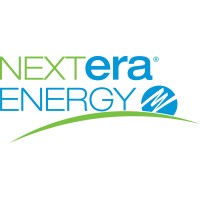
NextEra Energy, Inc.
NextEra Energy, Inc. (NYSE: NEE) is one of the largest electric power and energy infrastructure companies in North America and is a leading provider of electricity to American homes and businesses. Headquartered in Juno Beach, Florida, NextEra Energy is a Fortune 200 company that owns Florida Power & Light Company, America’s largest electric utility, which provides reliable electricity to approximately 12 million people across Florida. NextEra Energy also owns one of the largest energy infrastructure development companies in the U.S., NextEra Energy Resources, LLC. NextEra Energy and its affiliated entities are meeting America’s growing energy needs with a diverse mix of energy sources, including natural gas, nuclear, renewable energy and battery storage. For more information about NextEra Energy companies, visit these websites: www.NextEraEnergy.com, www.FPL.com, www.NextEraEnergyResources.com.






